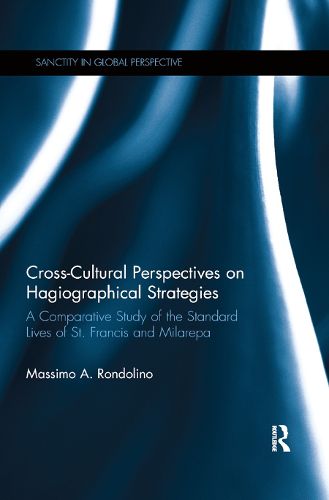Readings Newsletter
Become a Readings Member to make your shopping experience even easier.
Sign in or sign up for free!
You’re not far away from qualifying for FREE standard shipping within Australia
You’ve qualified for FREE standard shipping within Australia
The cart is loading…






This book examines the potential of conducting studies in comparative hagiology, through parallel literary and historical analyses of spiritual life writings pertaining to distinct religious contexts. In particular, it focuses on a comparative analysis of the early sources on the medieval Christian Saint Francis of Assisi (1182-1226) and the Tibetan Buddhist Milarepa (c. 1052-1135), up to and including the so-called ‘standard versions’ of their life stories written by Bonaventure of Bagnoregio (1221-1274) and Tsangnyoen Heruka (1452-1507) respectively.
The book thus demonstrates how in the social and religious contexts of both 1200s Italy and 1400s Tibet, narratives of the lives, deeds and teachings of two individuals recognized as spiritual champions were seen as the most effective means to promote spiritual, doctrinal and political agendas. Therefore, as well being highly relevant to those studying hagiographical sources, this book will be of interest to scholars working across the fields of religion and the comparative study of religious phenomena, as well as history and literature in the pre-modern period.
$9.00 standard shipping within Australia
FREE standard shipping within Australia for orders over $100.00
Express & International shipping calculated at checkout
This book examines the potential of conducting studies in comparative hagiology, through parallel literary and historical analyses of spiritual life writings pertaining to distinct religious contexts. In particular, it focuses on a comparative analysis of the early sources on the medieval Christian Saint Francis of Assisi (1182-1226) and the Tibetan Buddhist Milarepa (c. 1052-1135), up to and including the so-called ‘standard versions’ of their life stories written by Bonaventure of Bagnoregio (1221-1274) and Tsangnyoen Heruka (1452-1507) respectively.
The book thus demonstrates how in the social and religious contexts of both 1200s Italy and 1400s Tibet, narratives of the lives, deeds and teachings of two individuals recognized as spiritual champions were seen as the most effective means to promote spiritual, doctrinal and political agendas. Therefore, as well being highly relevant to those studying hagiographical sources, this book will be of interest to scholars working across the fields of religion and the comparative study of religious phenomena, as well as history and literature in the pre-modern period.